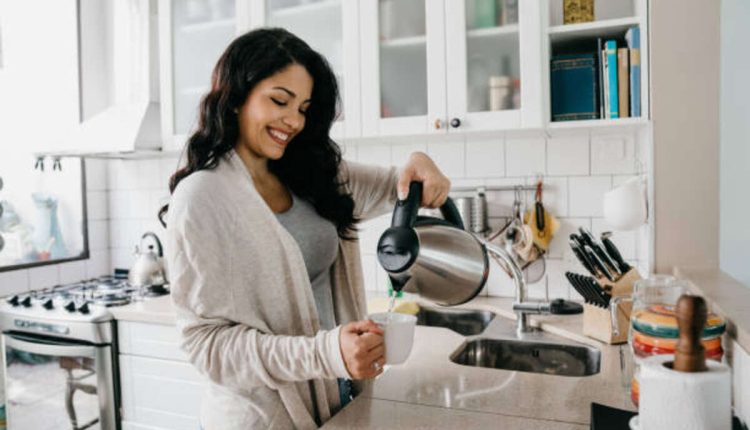When choosing the name of a kitchen appliance, many factors must be considered. An ideal name must be catchy and memorable while reflecting what kind of food your business provides.
Some appliances are used for cooking, while others help preserve or clean foods. There are even high-tech culinary tools on the market!
Stove
The stove combines an oven and cooktop into one unit as an essential kitchen appliance. Wood or gas burning uses these resources to heat homes while cooking food. Today’s definition of stove does not encompass early versions that used wood-burning stoves for both purposes – instead, these early stoves were generally not exclusively used for cooking purposes! As central heating systems became more widely available, demand for such dual-purpose stoves declined significantly.
Today, range and stove are often used interchangeably when discussing an appliance with burners for heating pots and pans, though, in industry circles, there are guidelines for their usage.
In some countries, such as the United Kingdom and Ireland, the top part of a stove is commonly known as a hob – perhaps as an allusion to open kitchen chambers found in ancient castles or the magical cauldrons found in fairy tales. Over time, it may become common practice to refer simply to it as stove instead.
Oven
Ovens are kitchen cooking appliances used for baking and roasting foodstuffs. Most ovens run on natural gas or electricity for power; specific models can heat directly from their top surface for broiling or grilling purposes. You’ll find these versatile appliances both residentially and commercially, depending on what needs you have for them.
Understanding the difference between an oven, range, and stove is crucial because many use these terms interchangeably. While they share similarities in definition – for instance, a furnace can refer to any cooking device without an oven while a range can include both components – it’s important to realize they’re distinct units altogether.
Ovens are commonly used for baking but can heat and prepare other foods, including meat, vegetables, and desserts. Ranges typically run off gas or electricity, but some models can use wood or coal to heat.
No matter your reason for purchasing or exploring kitchen appliances, it is crucial to understand their function and capabilities to select the ideal machine for your home or business. By understanding each model’s features, it becomes much easier to choose a perfect device.
The word oven has an extensive and dynamic history, from its roots as a clay chamber to modern usage in everything from slang and silly nonsense phrases. Although its exact origin remains obscure, its importance in today’s society can easily be understood; the modern English oven is related to Old English often, which means hot cooking chamber. Middle High German and Old French also share similar words related to ofen.
Range
When it comes to finding the ideal kitchen appliance for your home, many choices are available. Everything from essential stoves to advanced ovens offers unique functions, but before making a purchase, you must understand their differences – for instance, a range combines an oven with a stovetop into one unit that can either run on gas or electricity and is available either freestanding or slide-in models.
When purchasing a range, it’s essential to consider your cooking habits. Do you prefer baking pastries or frozen pizza? If unsure, consult an expert who can advise on which appliance best meets your needs. Also, consider your space requirements; small kitchens might not accommodate large appliances such as an oven or range.
While you may require numerous kitchen appliances, it’s essential to prioritize those that play a vital part in daily life. An unnecessary purchase could cost more in the long run; investing in high-quality appliances that will last will pay dividends over time. Spend time researching market options until you find one suitable for your home; take note of price and features before making your final choice; for instance, check the BTU rating of your cooker to know its heating capability; higher BTU numbers indicate more powerful stoves.
Cooktop
Cooktops (pronounced kuk-ta-pow) are flat cooking surfaces powered by gas, electricity, or induction that fit seamlessly into countertops or kitchen islands and offer a sleek and sophisticated appearance in your home. Cooktops may operate standalone appliances or be integrated into ranges to form an entire cooking range.
While it may appear simple, your cooktop is integral to home life. They come in all sizes and configurations, from two burners up to six; some models also offer specialty burners for grills or other unique forms of cooking. Cooktops run on natural gas or propane either piped directly into your home or filled from an on-demand tank each time they are used.
Cooktop use is deceptively straightforward: when power is turned on, an electric current passes through a coil and generates magnetic fields detectable by metal pots and pans placed upon it. These magnetic fields cause metal surfaces to emit their heat energy, which transfers directly into food within its container. By altering power usage, you can customize the intensity and speed of meal preparation.
If you’re searching for an all-around, high-quality cooktop, consider options from brands like Viking, Samsung, and Wolf. Each offers exceptional heat control, easy cleaning, and additional features that make their products popular among cooks. If you need assistance selecting an ideal option for your space or don’t know which cooktop best meets your requirements, speak with an experienced kitchen professional to determine which option fits the bill.


